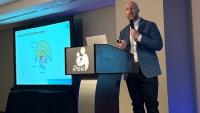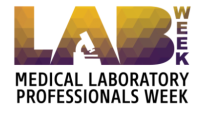Pediatric Brain Tumors
Make an Appointment
Our team of dedicated access representatives is here to help you make an appointment with the specialists that you need.
Pediatric brain tumors are abnormal growths that arise in the brain during childhood. Several treatment options are available, including close observation, surgery, radiation therapy, and chemotherapy.
Although brain tumors are rare overall, they are the most common solid tumor among children. What’s important to remember is that children are not simply miniature adults. Brain tumors in children behave differently than brain tumors in adults. What’s more, children require treatment that is tailored not just to their tumor type, but also to their age and development. At the Pediatric Neurosurgery Center, we are committed to meeting the special needs of young patients and their families.
Pediatric brain tumors can be either benign or malignant. Malignant, or cancerous, tumors tend to be fast-growing and aggressive, invading surrounding brain tissue. Benign tumors are not cancerous; they do not spread and they tend to be slow-growing. Even slow-growing benign brain tumors can eventually become problematic, though. Because the skull is a rigid structure with little unoccupied space inside, benign masses can cause problems as they compress brain tissue, nerves, blood vessels and other critical structures.
Depending on a tumor’s origin, it can also be classified as either primary or secondary. A primary tumor originates in the brain. A secondary tumor originates elsewhere in the body and spreads to the brain. (Only malignant tumors can spread and form secondary tumors.)
The most common pediatric brain tumors are:
Astrocytoma
These tumors arise from star-shaped support cells in the brain and spinal cord. There are several types of astrocytoma; the most common among children includejuvenile pilocytic astrocytoma, brainstem glioma andcerebellar astrocytoma. About 40 percent of childhood brain tumors are astrocytomas, making this the most common brain tumor among children.
Medulloblastoma
This type of tumor arises in the cerebellum. It is the most common malignant brain tumor among children.
Ependymoma
Ependymomas arise from support cells in the brain and spinal cord. Ependymomas can be either benign or malignant. About 9 percent of childhood brain tumors are ependymomas.
Choroid plexus tumor
This tumor includes two types, choroid plexus papilloma and choroid plexus carcinoma. It occurs most often in the mid-teenage years, but also makes up a substantial proportion of tumors in infancy.
Craniopharyngioma
This tumor occurs near the pituitary and hypothalamus glands. It is relatively uncommon, making up about 6 percent of childhood brain tumors.
Pineal region tumors
The pineal region is an area in the middle of the brain that releases neurotransmitters. Several tumors in this region are more common in children than in adults, including germ cell tumors, pineal cell tumors, and pineal cysts. Pineal region tumors are relatively uncommon, making up about 3 to 8 percent of childhood brain tumors.
Primitive neuroectodermal tumor
These rare tumors of neuroectodermal origin are typically found in the cerebrum.
Atypical teratoid rhabdoid tumor (ATRT)
These rare tumors of neuroectodermal origin are typically found in the cerebellum in very young children.
Although not common among children, other brain tumors that can occur include oligodendroglioma, orbital tumor, pituitary tumor, ganglioglioma, and meningioma. Despite being rare among children generally, meningioma is common among those children who have the genetic condition neurofibromatosis type 2.
Symptoms
There are many symptoms that may lead to a search for a brain tumor. It is important to understand that many of these symptoms can mimic other far more common and benign conditions, such as seizures, headache disorders, infections, and many others.
Symptoms vary by tumor type, size and location and may include:
- Poor coordination
- Headache in the morning upon waking
- Nausea and vomiting
- Lethargy
- Changes in behavior or personality
- Vision disturbances
- Seizures
- Macrocephaly
A brain tumor may block the cycling of cerebrospinal fluid, causing hydrocephalus, the symptoms of which include headache, nausea and vomiting, lethargy, and macrocephaly.
Diagnosis
In addition to a physical examination and complete medical history, a neurological examination is typically performed to establish symptoms and identify any possible problems. This exam consists of assessing eye movements, sensation, hearing, sense of smell, motor function, swallowing, balanc, and coordination.
Imaging studies are the key component of diagnosing brain tumors among children. Magnetic resonance imaging (MRI) or a computed tomography (CT) scan may be used and conducted with or without contrast enhancement. Imaging studies can have certain risks, particularly among growing children. Our experienced pediatric neurosurgeons recommend the study that’s best for your child. The study is performed in a Pediatric Neurosurgery Center with technology made for children and their unique needs.
Depending on the suspected diagnosis, additional procedures may be conducted that include:
- An X-ray of the chest may be performed to seek the location of a primary tumor that has metastasized to the brain.
- A myelogram may be performed to check for tumor metastasis in the spine.
- A bone scan may be used to find bone abnormalities and tumors.
- A cerebral angiogram is a minimally invasive procedure that is conducted to visualize the blood vessels in the tumor, specifically for highly vascular tumors.
- Spinal tap, a procedure in which a special needle is inserted into the spinal canal, can be performed to acquire a sample of cerebrospinal fluid. The fluid may be tested to detect cancer cells or establish whether an infection or other problems are present.
- A serum tumor marker test involves drawing blood to test for tumor markers that can reveal a particular tumor type.
- Magnetic resonance spectroscopy (MRS) can detect the chemical composition of the tumor, which in turn can be used to identify the tumor type.
- Positron emission tomography (PET) scan can be used to detect malignant tumor cells by injecting radioactive glucose so that it can be traced in the body. (Since they are more active than normal cells, malignant tumor cells take up more glucose for fuel.)
A biopsy is usually conducted before or during surgery to provide a confirmed diagnosis and guide treatment decisions.
Risk Factors
The cause of brain tumors among children is unclear. Most arise spontaneously.
Some brain tumors are associated with genetic conditions, so they can be inherited. Genetic conditions that increase a child’s risk for a brain tumor include neurofibromatosis type 1, neurofibromatosis type 2, Turcot syndrome, Li-Fraumeni syndrome, and tuberous sclerosis.
Pediatric brain tumors can develop at any age, from infancy to young adulthood.
Treatments
At Columbia, our pediatric neurosurgeons use the most sophisticated surgical techniques to successfully treat brain tumors among children, providing the best possible results. A child’s age, tumor type, tumor location and several other factors are considered when our pediatric neurosurgeons sit down with you and your child to make a treatment plan.
For some children, observation may be the first step. This consists of closely monitoring the tumor’s growth by performing periodic imaging tests.
Treatment typically consists of a combination of surgery, radiation therapy, and chemotherapy.
- Most children will undergo surgery to remove the brain tumor. The pediatric neurosurgeon’s goal of surgical resection is to excise as much tumor as is safely possible. If hydrocephalus is still evident after surgery, a shunt, which is flexible tubing used to drain excess fluid, can be surgically inserted.
- Radiation therapy is typically used after surgical removal of aggressive tumors or if complete removal of the tumor is not possible. It can be administered a number of ways, one of which is stereotactic radiosurgery. Sparing the surrounding brain tissue, stereotactic radiosurgery precisely focuses high doses of radiation at the tumor site with the use of photon beams from a linear accelerator or cobalt X-rays. However, radiation therapy is usually avoided for children younger than three because radiation can interfere with brain development.
- Chemotherapy can be used instead of or in addition to radiation therapy to treat microscopic tumor cells remaining after surgery.


